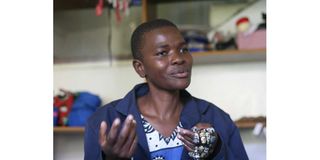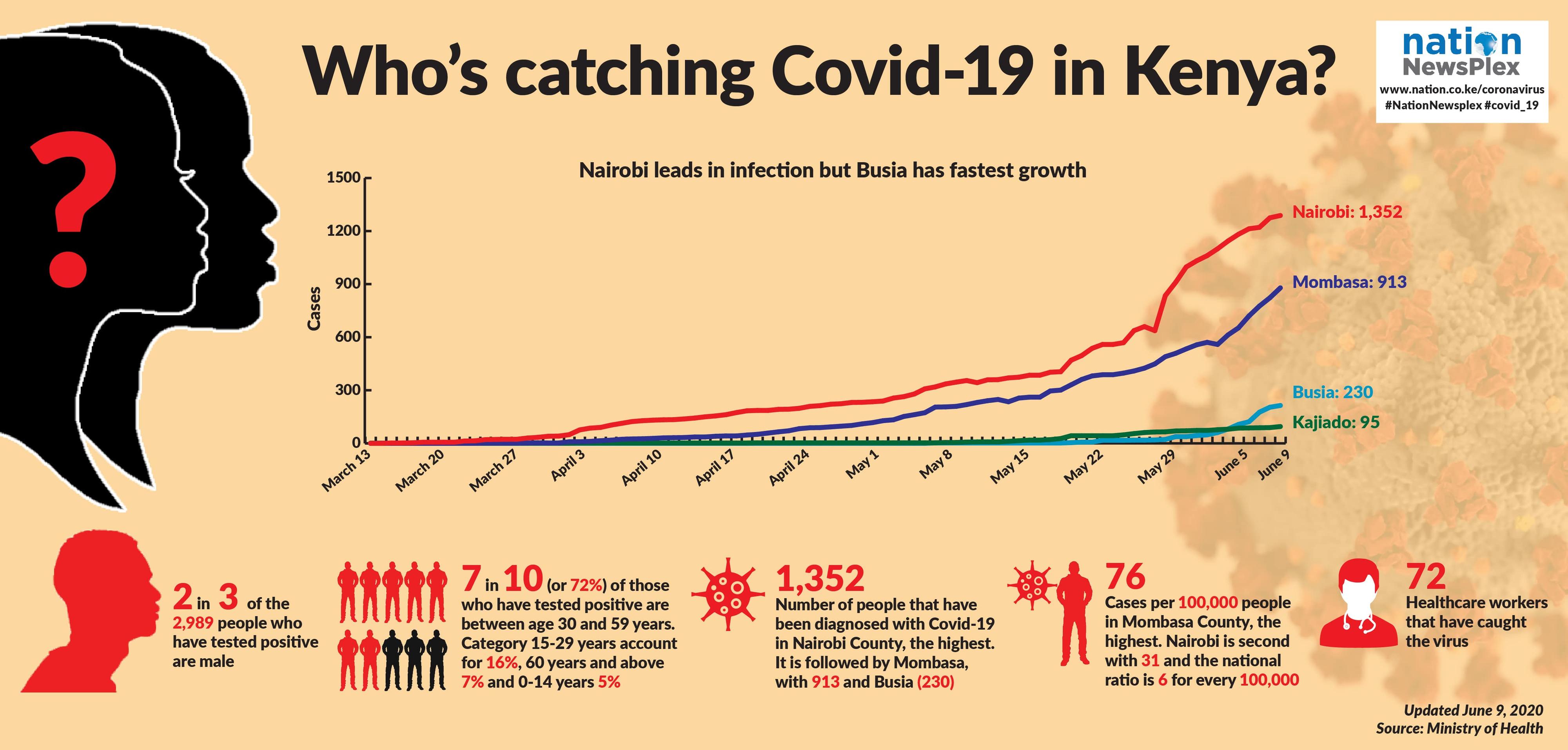Premium
High teen HIV, abortion rates spotlight sex education
DESIGN | JOY ABISAGI
What you need to know:
- Eighteen per cent of teenagers aged between 15 and 19 are mothers or pregnant with their first child, according to the 2014 Kenya Demographic Health Survey.
- Half of sexually active unmarried teenagers (15-19 years) do not use contraceptives of any kind (modern or traditional).
- In 2014, 9,720 teenagers and youth aged between 15 and 24 years died in Kenya due to Aids-related illnesses, according to data from the National Aids Control Council.
When asked to breastfeed her seven-month old infant to stop it from wailing, 15-year-old Mary Akumu* picks the baby roughly and slaps it. “You people think my breasts are a cat’s that I should spend the whole day breastfeeding this thing?” she barks.
An older woman in this house in Nairobi’s Kariobangi, Rosemary Olela, understands that motherhood is overwhelming for the girl.
She approaches the teenager, asks her to eat, and then takes the infant from her hands and rocks it.
Rosemary runs a social enterprise for HIV-positive women. In this business, there are nine teenage girls who are as young as 13.
TEEN MOTHERS
Mary, and many of the girls at this centre, make up 18 per cent of teenagers aged between 15 and 19 who are already mothers or pregnant with their first child, according to the 2014 Kenya Demographic Health Survey (KDHS).
This percentage has barely improved from 11 years ago when it was 18.5, according to the 2003 survey.
A review of family planning data by Nation Newsplex finds that half of sexually active unmarried teenagers (15-19 years) do not use contraceptives of any kind (modern or traditional).
Among the girls at the Kariobangi centre, murmurs and stories have been flying around about one of them, whose cervix had to be removed at Kenyatta National Hospital to save her life after she tried procuring a backstreet abortion.
The girls were not part of Rosemary’s plans, but she had seen a few die while trying to procure abortions with some sleeping on the pavement destitute and pregnant, and she took them in.
The Ministry of Health, concerned about the increasing number of unsafe abortions among teenagers, recently announced that it had developed new guidelines that require children of appropriate age to be taught pregnancy matters.
As society engages in debates about where and how sex should be practiced—in holy matrimony or elsewhere— Aids continues to take a toll on the young.
AIDS-RELATED ILLNESSES
According to the guidelines: Policies, Standards and Guidelines for Reducing Maternal Morbidity and Mortality in Kenya, sex education in schools will be used as a strategy to reduce unplanned crisis pregnancies that lead to unsafe abortions and high maternal mortality and serious illness in the country.
As society engages in debates about where and how sex should be practiced—in holy matrimony or elsewhere— Aids continues to take a toll on the young.
In 2014, 9,720 teenagers and youth aged between 15 and 24 years died in Kenya due to Aids-related illnesses, according to data from the National Aids Control Council (NACC). Nearly three in ten (29 per cent) people newly infected with HIV are teenagers or youth, according to NACC.
Despite the dire statistics, many, including religious institutions, oppose the introduction of sex education in schools, arguing that providing such information to teenagers gives them a licence to engage in sexual activity.
Newsplex weighed both lay and expert arguments, and the interventions that have been employed in tackling teenage pregnancies against available data. Children, the numbers show, are learning about sexual activity from their peers.
The rate of early motherhood is not uniform around the country. The number of teens aged 15 to 19 who have had a child ranges from 33 per cent and 31 in Homa Bay and Narok counties to 2.6 per cent in Murang'a, three per cent in Mandera and four per cent in Nyandarua and Nyeri
In the last 11years, KDHS noted, teenage pregnancy has remained largely unchanged. Mary was 14 when she had her son.
ALARM RAISED
United Nations agencies, concerned about children’s wellbeing and health, have raised the alarm more than once in the last year.
Every hour, 26 teenagers between 15 and 19 in Sub-Saharan Africa gets infected with HIV, according to a 2015 Unicef report, and girls make up seven in ten of all infections among adolescents.
The report: Statistical update on children, adolescents and Aids, states that the deaths of teenagers in the age bracket with HIV in Kenya, alongside South Africa, Nigeria, India, Mozambique and Tanzania, make up almost half of the adolescents with the virus, worldwide.
Those who have survived unsafe sex without contracting HIV, such as Mary, were robbed of their childhood when they got pregnant.
Looking at the circumstances surrounding these girls’ lives— being chased away from home as their parents distance themselves from the shame their pregnancy may have brought upon the family—there is no guarantee that their future will be salvaged.

Rosemary Olale, co-founder of of the social enterprise Tuinuke Tuendelee Mbele, which works with young women living with HIV. In 2014, 9,720 people aged between 15 and 24 years died in Kenya due to Aids-related illnesses. PHOTO | NATION FILE
In a forum organised by the Women’s Parliamentary Caucus in a hotel in Nairobi, human rights activists decried how suggestions of practical solution to this ticking time bomb in Kenya has been opposed by patriarchal and “Victorian.
Two years ago, nominated senator Judith Sijeny introduced the Reproductive Healthcare Bill of 2014, which proposed including content on sex in the education syllabus for children between the ages of 10 and 17.
The chair of the Kenya Union of Post Primary Education Teachers (Kuppet), Omboko Milemba, opposed the proposal, saying the content would introduce children to sexual content too early and persuade the youngsters to move up their interest in sexual intercourse and participate in it. But these standpoints are disputed by data.
EARLY SEX
The Kenya Aids Indicator Survey 2012 (KAIS) showed that young children educate themselves about sex from the most ill-informed sources—their peers— with devastating consequences.
Children as young as 12 had made a deliberate decision to engage in sexual intercourse. The reasons for their choices were as baffling as their age.
One in every four (25 percent) said they wanted to have sex. Another 21 per cent said it “it just happened” while 19 per cent said they were in love. Five per cent of the children who had sexual intercourse prior to the KAIS study said they had been coerced.
For Mary, it was the desire to be like other girls, like the 17 per cent in KAIS who said a friend influenced them.
“They just used to tell me that I will have sex one day anyway, so I should just have fun because I do not know what tomorrow has,” she told Newsplex. None sought information from parents, older peers or the media.
When asked about her parents, Mary says: “Mum is very harsh so I normally try hard not to annoy her. One day I asked for pads and she just hit me. But when I got pregnant she just chased me from home, and I have been begging to go back but she has refused to take me”.
Of her step father, she says: “We are not supposed to talk to him without going through mum first.”
Dr Charles Muga, behavioural scientist at Family Aids Care and Education Services (Faces) in Kisumu said, “Parents these days need more help than the children they are raising”.
Apart from pregnancies, unsafe sex has birthed other socio-economic problems, including abortion. Among the girls in Kariobangi, is one who, the story goes, “will never have a child again because the doctors removed where the child grows in.”
The girl, now 19, said she visited a woman in Korogocho who procures abortions. When she started bleeding, the woman asked her to leave the house at night. She fainted and woke up to find herself in a bed at Kenyatta Hospital.
In a two-day meeting held at a Nairobi hotel in May this year, the Kenya Parliamentary Human Rights Association and 12 other civil society groups listened to horror stories of young women who resorted to backstreet clinics.
Pregnancies were terminated using such crude methods as ingesting large amounts of detergent, inserting knitting needles into the cervix, overdosing on various drugs, and applying pressure to the abdomen.
A national study by the African Population and Health Research Centre in 2012 found that 464,690 abortions were carried out that year. That corresponds to 48 abortions per 1,000 women of reproductive age (15-49 years).
According to the study, 119,912 women and girls were treated for complications from unsafe abortions in public hospitals. One in six of those who sought treatment were girls aged 10-19.
* Not her real name





